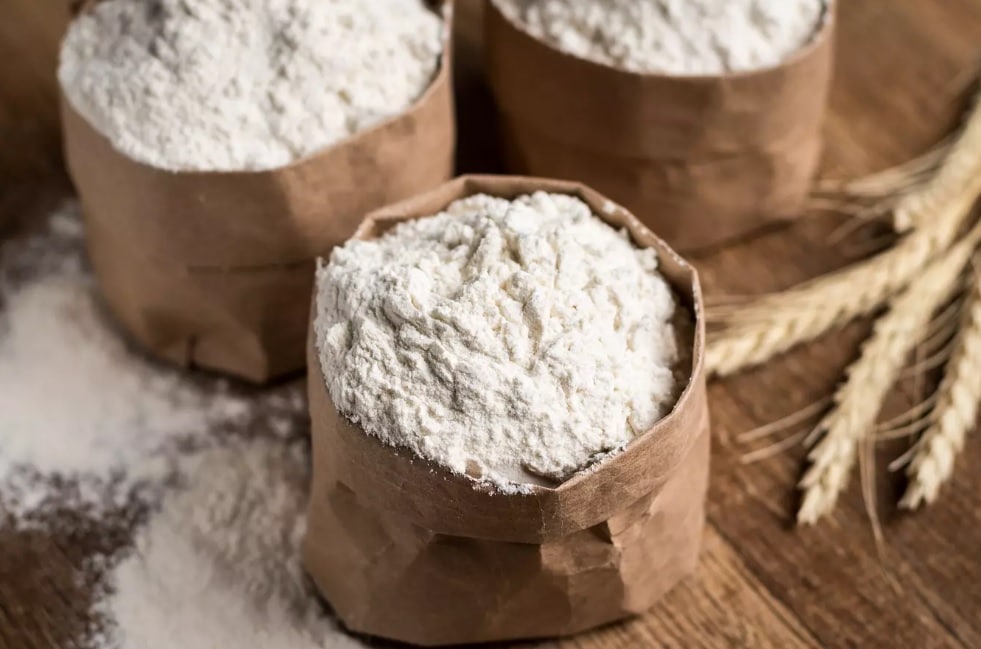Everyone uses wheat flour in their recipes, but did you know that there are different types of it? Check out what they are and the best uses:
A wheat flour It is a type of powder that comes from grinding wheat grain. This type of flour is the most produced throughout the world, being the main ingredient in various preparations, such as bread, cakes, pasta and many other recipes.
Furthermore, wheat flour is also very common and is easily found in supermarkets. It is obtained by grinding wheat grain, which can be common or other species, such as Triticum wheat.
The most used wheat flour here is white flour, but did you know that there are other types and classifications of wheat flour? Below we will learn about each of them and what type of recipe they are recommended for.
Types of wheat flour and their uses
What determines the type of wheat flour is the grain. Check out which wheat grains originate the three types of flour:
1. White flour
White flour, which is the most common and also the most used, is obtained from grinding only wheat endosperm. Therefore, this flour provides a milder flavor and contains a lot of gluten, which makes the bread softer. In the case of people with gluten intolerance, white wheat flour should be avoided.
2. Wholemeal flour
Whole wheat flour, on the other hand, is made from grinding the complete wheat grain, including its bran, endosperm and germ. Therefore, this flour is not as light and smooth as white flour. Furthermore, as it does not go through a refinement process, it maintains all its nutrients, including fiber and vitamins.
3. Semolina flour
Finally, among the types of flour we have semolina flour, which is made from a different species of wheat, called Triticum durum. So, in this case we have a flour with a grainy texture, which is a little thicker than white, and is more suitable for using to make fresh pasta.
Classification of wheat flour
In addition to the type of wheat flour, there are also classifications, which are defined by the Technical Regulation on the Identity and Quality of Wheat Flour, determined by the Ministry of Agriculture, Livestock and Supply.
1. Type 00 white wheat flour
This flour is the most refined of all, 100% natural and made from the weakest wheat grains. Therefore, type 00 flour has a lower gluten content and at the same time absorbs more water. Therefore, this flour is best used to prepare cakes and pies, because it provides a lighter and more airy dough.
2. Type 0 white wheat flour
Type 0 flour contains a little more gluten than the first type. But in addition, another factor that differentiates the two is that type 0 flour is naturally bleached and has more iron. Therefore, it helps with the texture and volume of the pasta prepared with it. Therefore, type 0 flour is recommended for making bread, pizza and pasta.
3. Type 1 wheat flour
Now type 1 flour is one of the most common and most versatile of all. This flour is obtained by mixing weak and strong wheat grains, that is, with little and a lot of gluten. In addition, it also goes through a natural bleaching process. Therefore, it is also very suitable for use in bread recipes.
4. Type 2 wheat flour
This flour, unlike the others, has a more yellowish tone. This is because it is produced from the outermost part of the wheat. Therefore, it is the type of flour that has the greatest amount of nutrients. So, it is great for preparing biscuits, cookies and lighter breads, such as sponge cake, which we even have a recipe for here on the website.
How to choose the best?
And so, now that you know that there are several types of flour and what each of them is like, the question arises, how do I choose the best one for my recipe? First of all, you must pay attention to the information on the packaging to find out about the thickness of the flour and the type of grinding.
Keep in mind that the coarser the grind, the more integral the type of grain. Therefore, the flour grains are larger, and this can result in a heavier, thicker dough. Knowing this, the tip is to choose a medium to fine grind, which are indicated on the label as T55 or T65.
These numbers indicate that the chosen wheat flour has a finer grind, and is therefore more suitable for use in bread, cake and lighter pasta recipes.
Now, if the recipe you are going to make calls for a coarser flour, which provides a heavier texture for the dough, look for flour numbered T150.
What is the strength of wheat flour?
In addition to the type and classification of wheat flour, it also has the so-called gluten strength, or W value. This gluten strength is linked to the amount of proteins, in this case, gliadin and glutemin, that are present in the flour.
A flour considered strong has the power to absorb more water, meaning the dough is more hydrated and more resistant, and will therefore rise more. However, it is not possible to know the W value of flour sold on the market, since there is no standardization in large-scale production.
Therefore, the protein content that appears on the packaging label does not relate to the strength of the gluten. In fact, when dividing the serving weight by the amount of protein, most flours will have a protein content of 10%.
READ MORE:
Learn to interpret and divide culinary weights and measures
5 tips for replacing basic ingredients in your recipe
6 carrot cake recipes without wheat flour
Coconut flour, what is it? Know the pros and cons of consumption
How to make fluffy and tasty low carb flaxseed bread
Recipe for delicious fit cheese bread, dairy-free, egg-free, gluten-free
Sources: Tudo Gostoso Deliway I Love Homemade Bread Eat Well

Sign up for our newsletter and stay up to date with exclusive news
that can transform your routine!
Warning: Undefined array key "title" in /home/storelat/public_html/wp-content/plugins/link-whisper-premium/templates/frontend/related-posts.php on line 12
Warning: Undefined array key "title_tag" in /home/storelat/public_html/wp-content/plugins/link-whisper-premium/templates/frontend/related-posts.php on line 13




